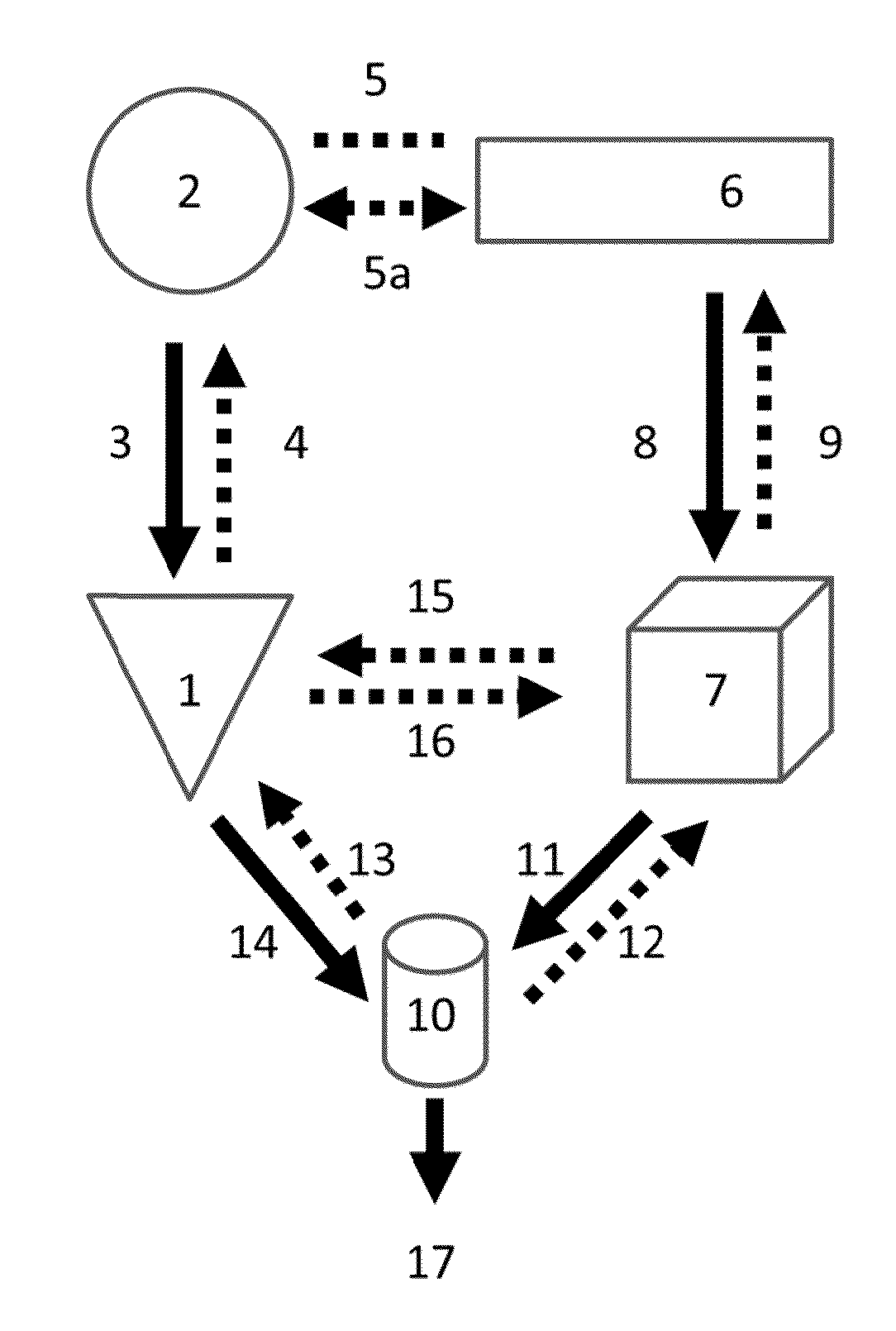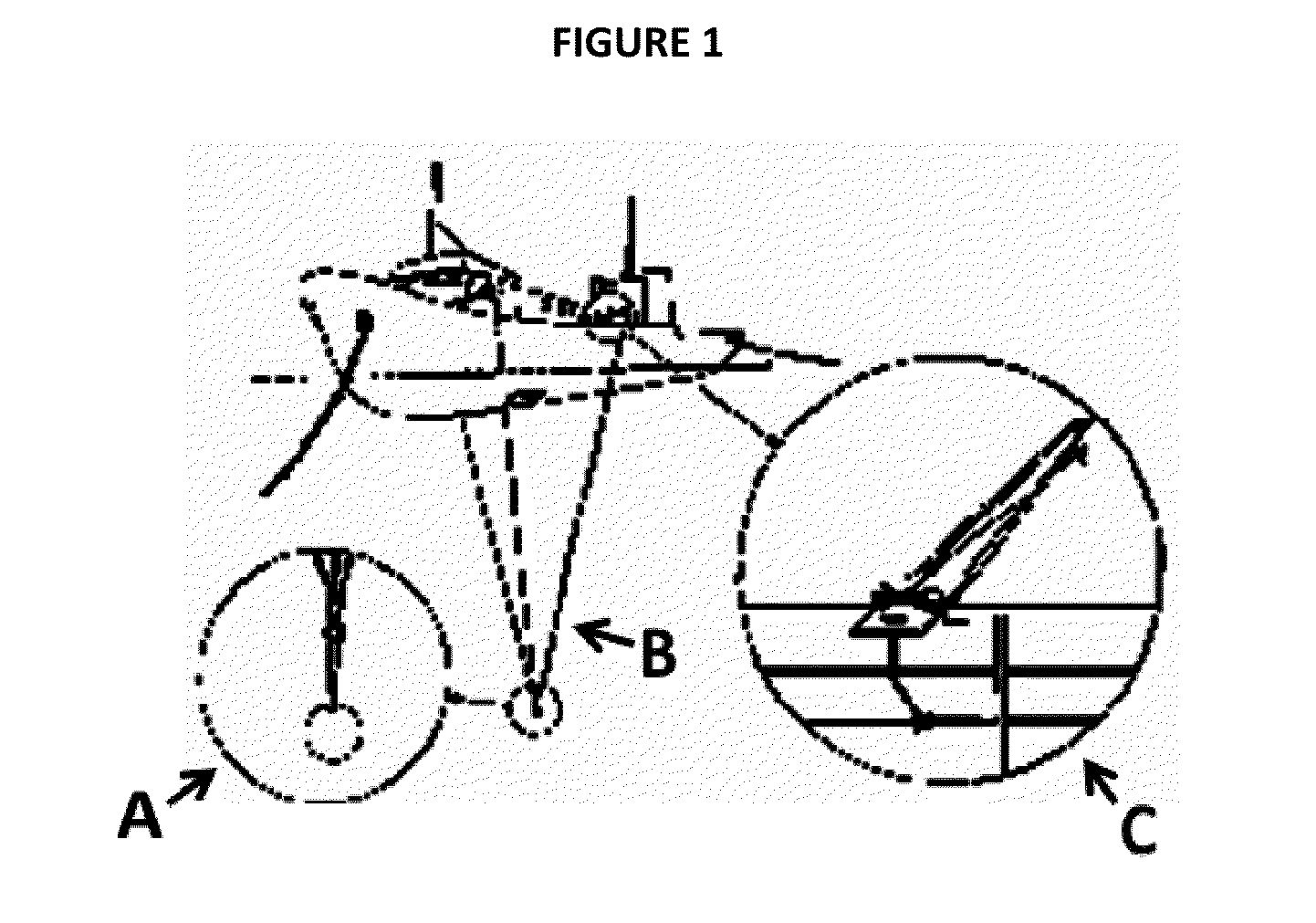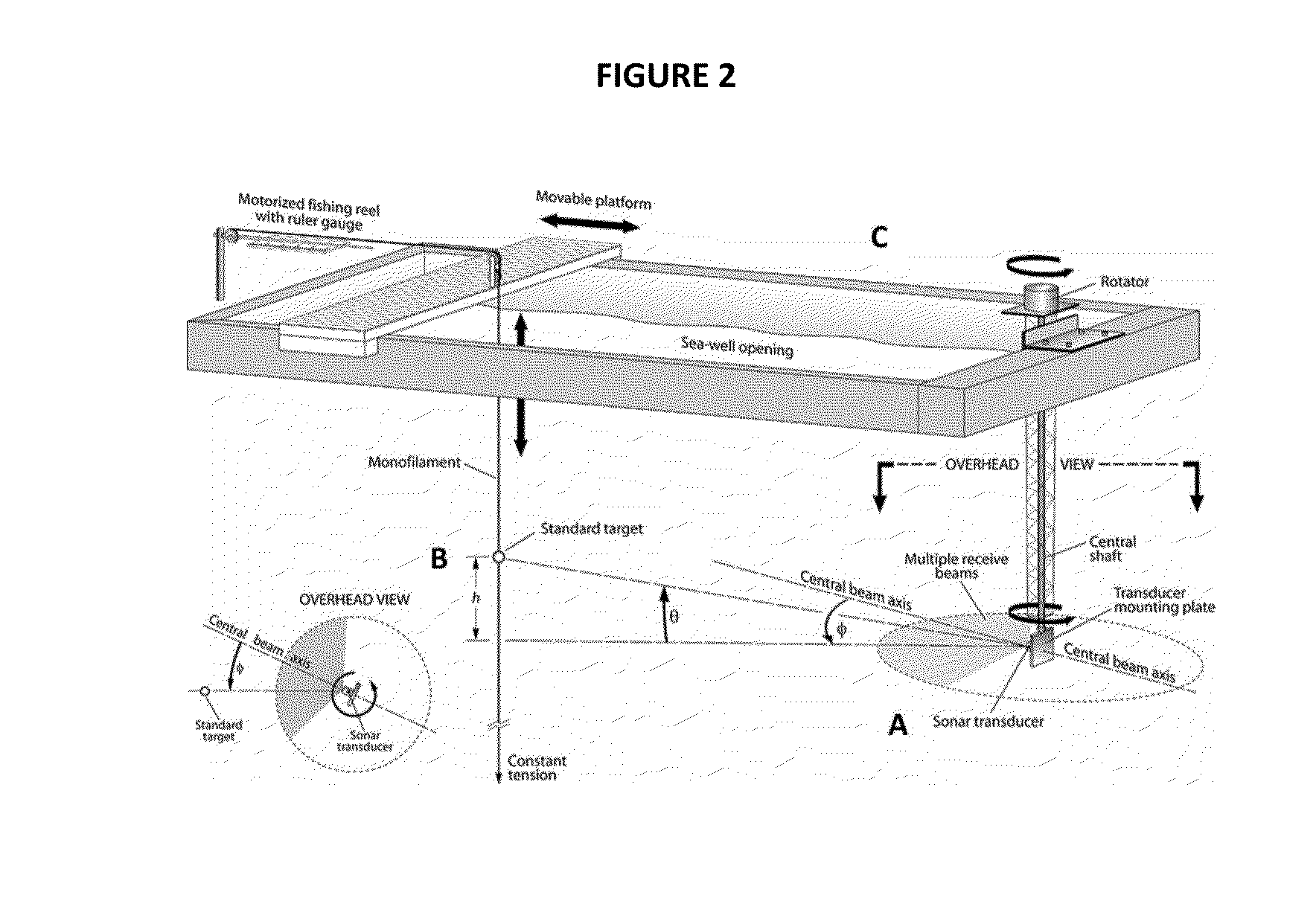Platform-Independent Sonar Calibration Enabling System
a sonar and platform-independent technology, applied in the field of active acoustic devices, can solve problems such as ageing effects, physical, electrical and electronic damage, and potential damage to electronic components
- Summary
- Abstract
- Description
- Claims
- Application Information
AI Technical Summary
Benefits of technology
Problems solved by technology
Method used
Image
Examples
example 1
Calibration of a Towed Sidescan Sonar
[0093]This example describes the in-motion calibration of a towed, sidescan sonar using an anchored buoyant referent.
[0094]An EdgeTech model 260-TH Image Correcting Side Scan sonar, with model 272-TD dual-frequency analog towed vehicle, with operating frequencies at 100 kHz and 400 kHz, is towed from a 10-m long boat. The transducer axes are adjusted at a declination of 10 degrees, hence pointing 10 degrees below the horizontal.
[0095]A 152.4-mm diameter, thin-walled focusing sphere filled with a fluorocarbon liquid, as described by Deveau and Lyons (1995) (IEEE Journal of Oceanic Engineering 34, 93-100), is used as a standard target.
[0096]The standard target is attached to a monofilament line connected to a bottom weight and a float at the free end. The target height over bottom is chosen to be 1.5 m.
[0097]A subsurface float consisting of a hollow-glass pressure vessel equipped with radio transmitter electronics and an antenna (i.e., referent-loc...
example 2
Calibration of an AUV-Mounted Sidescan Sonar
[0100]This example describes the underway calibration of a sidescan sonar mounted on an AUV using an anchored buoyant referent.
[0101]The Remote Environmental Measuring UnitS (REMUS) 100 autonomous underwater vehicle (AUV) is configured with a Marine Sonic Technology dual-frequency sidescan sonar operating at 300 kHz and 1800 kHz.
[0102]A 91.44-mm diameter hollow ceramic flotation sphere is used as a standard target. (Atkins et al., (2007) Oceans, Europe IEEE Conference Proceedings, 4 pp [doi:10.1109 / OCEANSE.2007.4302487]).
[0103]This standard target is attached to a bottom weight by a 2-m length of monofilament nylon.
[0104]An acoustic transponder (i.e., referent-locator) is also attached to the bottom weight.
[0105]During operations within acoustic range of the target, the position of the target is determined with an ultrashort-baseline system (USBS) mounted on the mother ship.
[0106]Registration of echoes from the standard target can be relat...
example 3
Calibration of a Scientific Multibeam Sonar Mounted on a Research Vessel
[0108]This example describes the calibration of a scientific multibeam sonar mounted on the hull of a research vessel that is drifting or in motion.
[0109]The Simrad model MS70 Scientific multibeam sonar, with broadband frequency range 70 kHz to 120 kHz, is mounted on the hull of a research vessel.
[0110]Two standard targets are chosen to cover the total operating frequency band in piecewise fashion. These are solid spheres fabricated from tungsten carbide with 6% cobalt binder, with diameter 75-mm and 84-mm as described by Foote (in Oceans 2006 MTS / IEEE Boston Conference Proceedings, 4 pp. [doi: 10.1109 / OCEANS.2006.306944]; and, in Oceans 2007 Europe IEEE Aberdeen Conference Proceedings, 4 pp. [doi: 10.1109 / OCEANSE.2007.4302355]).
[0111]The targets are attached to a line consisting of 2-mm diameter monofilament nylon. Also attached to the line are a bottom weight and a float at the free end of the line to hold the...
PUM
 Login to View More
Login to View More Abstract
Description
Claims
Application Information
 Login to View More
Login to View More - R&D
- Intellectual Property
- Life Sciences
- Materials
- Tech Scout
- Unparalleled Data Quality
- Higher Quality Content
- 60% Fewer Hallucinations
Browse by: Latest US Patents, China's latest patents, Technical Efficacy Thesaurus, Application Domain, Technology Topic, Popular Technical Reports.
© 2025 PatSnap. All rights reserved.Legal|Privacy policy|Modern Slavery Act Transparency Statement|Sitemap|About US| Contact US: help@patsnap.com



